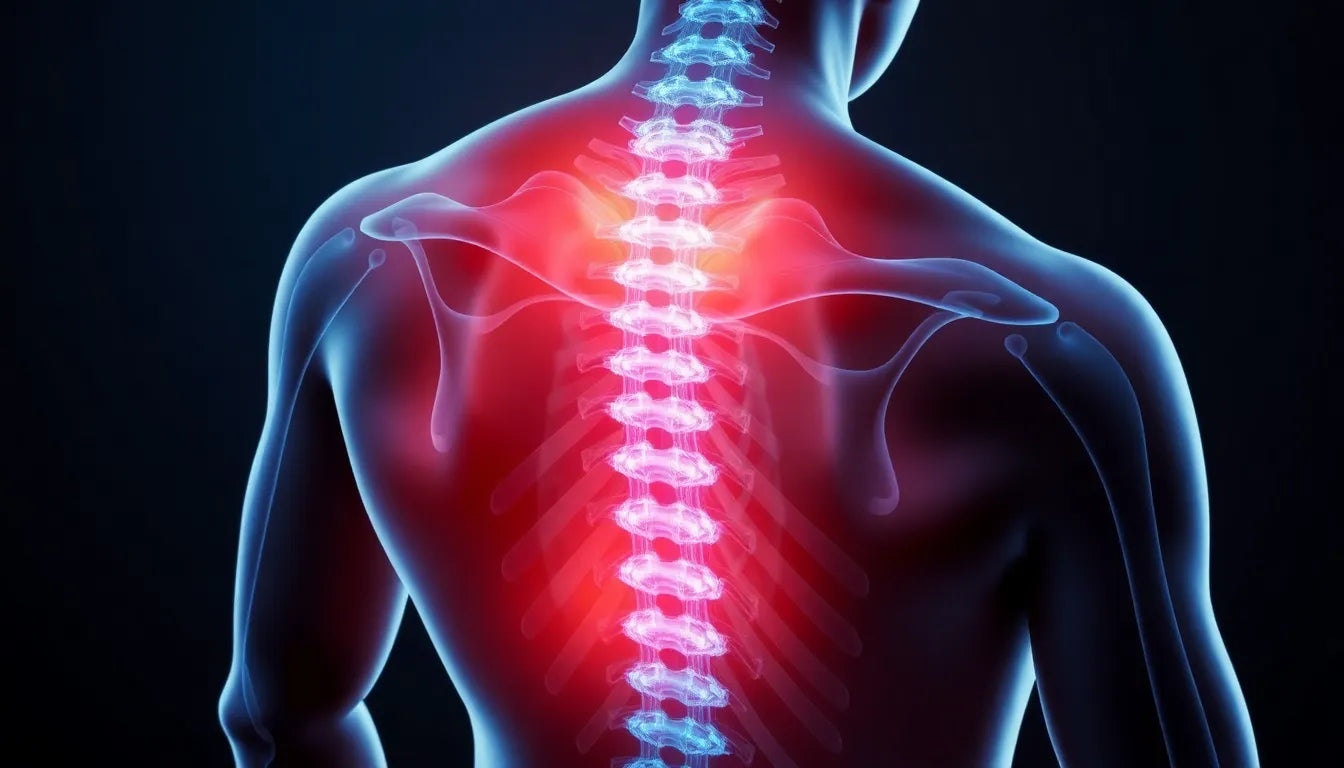Cervical spondylosis is a common condition that many people encounter as they age, often without even realizing it. This degenerative disorder is characterized by the wear and tear of the vertebrae and discs in the neck, primarily due to aging. It's a condition that affects a significant portion of the population over 40, with its prevalence increasing as people reach their 60s and beyond. While some individuals may remain asymptomatic, others may experience a range of symptoms that can impact daily life.
Understanding cervical spondylosis
At its core, cervical spondylosis involves changes in the neck's vertebrae and discs, leading to symptoms such as neck and shoulder pain, stiffness, and headaches. In some cases, individuals might also experience neurological symptoms, such as tingling or weakness in the limbs, which can be particularly concerning. These symptoms arise from the compression of nerve roots or the spinal cord, which can vary in severity from person to person.
Despite its commonality, cervical spondylosis is often considered a normal part of the aging process. However, when symptoms do occur, they can be quite disruptive, making it essential for individuals to find effective ways to manage them.
The importance of lifestyle changes
One of the most effective ways to manage the symptoms of cervical spondylosis is through lifestyle modifications. These changes can play a crucial role in alleviating discomfort and enhancing overall quality of life. By focusing on daily habits and routines, individuals can significantly reduce the impact of this condition on their lives.
Ergonomic aids, in particular, can offer substantial benefits. These tools are designed to support proper posture and reduce strain on the neck, which can help mitigate the symptoms associated with cervical spondylosis. From ergonomic chairs and desks at work to supportive pillows at home, these aids can make a noticeable difference in managing pain and stiffness.
Incorporating lifestyle changes, such as regular gentle neck exercises and improving posture, can also contribute to symptom relief. These practices help maintain flexibility, reduce stiffness, and promote better alignment during everyday activities. By prioritizing these modifications, individuals can take proactive steps towards managing their symptoms and improving their overall well-being.
Causes and risk factors of cervical spondylosis
Cervical spondylosis is primarily driven by age-related degeneration of the vertebral discs and joints in the neck. As we age, the cartilage that cushions the vertebrae can deteriorate, leading to increased friction and the development of bone spurs. These changes can result in symptoms ranging from mild discomfort to significant pain and stiffness.
Several risk factors can accelerate the onset or exacerbate the symptoms of cervical spondylosis. Aging is the most significant risk factor, as the condition is largely a result of the natural wear and tear process. Occupational strain, particularly jobs that require repetitive neck movements or prolonged periods of poor posture, can also contribute to early development. Previous neck injuries, obesity, arthritis, and genetic predisposition are additional factors that may increase the likelihood of developing cervical spondylosis.
Symptom management through lifestyle changes
Managing the symptoms of cervical spondylosis often involves a combination of lifestyle changes aimed at reducing discomfort and improving neck function. Gentle neck exercises are a cornerstone of this approach, as they help maintain flexibility and reduce stiffness. Simple exercises such as neck tilts, rotations, and stretches can be performed daily to enhance mobility and alleviate pain.
Improving posture is another crucial aspect of managing cervical spondylosis symptoms. Proper alignment of the spine during daily activities can significantly reduce strain on the neck. Ergonomic adjustments at work, such as adjusting chair height, desk setup, and monitor positioning, can help maintain good posture and prevent further aggravation of symptoms.
For basic pain management, over-the-counter painkillers can be used to alleviate mild discomfort. However, it is essential to use these medications as directed and consult a healthcare professional if symptoms persist or worsen.
When to seek medical attention
While lifestyle changes can effectively manage mild symptoms of cervical spondylosis, certain signs indicate the need for medical evaluation. Persistent or worsening pain, especially if it interferes with daily activities, should not be ignored. Neurological deficits, such as numbness, tingling, or weakness in the limbs, may suggest nerve involvement and require prompt medical attention. Additionally, any signs of spinal cord involvement, such as loss of coordination or bladder control, warrant immediate consultation with a healthcare provider.
In conclusion, understanding the causes and risk factors of cervical spondylosis can guide individuals in making informed lifestyle changes to manage symptoms effectively. By incorporating gentle exercises, improving posture, and using ergonomic aids, many people can find relief and enhance their quality of life. However, it is crucial to recognize when medical intervention is necessary to address more severe symptoms and prevent complications.
Ergonomic aids for cervical spondylosis relief
For those managing cervical spondylosis, ergonomic aids can be invaluable in reducing strain and promoting proper neck posture. These tools are specifically designed to support the neck and shoulders, minimizing discomfort and improving daily function.
Neck pillows and supports are popular ergonomic aids that help maintain the natural curve of the neck, reducing strain during sleep or prolonged sitting. These supports can alleviate pressure on the cervical spine, providing significant relief from pain and stiffness.
Posture trainers are another effective tool for individuals with cervical spondylosis. These devices encourage proper alignment and prevent slouching, which can exacerbate symptoms. By promoting better posture, posture trainers can help reduce the frequency and intensity of neck pain.
Real-life case studies illustrate the positive impact of ergonomic interventions. For instance, individuals who have incorporated ergonomic chairs and adjustable desks into their workspaces often report a noticeable decrease in neck discomfort and improved overall posture. These changes not only enhance comfort but also support long-term neck health.
Frequently Asked Questions
What is cervical spondylosis?
Cervical spondylosis is a degenerative condition affecting the neck due to age-related wear and tear. It involves changes in the vertebrae and discs, often leading to symptoms like neck pain and stiffness.
What are the common symptoms?
Common symptoms include neck pain, stiffness, headaches, and potential neurological symptoms such as tingling or weakness in the limbs.
How can lifestyle changes help?
Lifestyle changes, including gentle neck exercises, posture improvement, and the use of ergonomic aids, can effectively manage symptoms and improve quality of life.
When should I see a doctor?
Medical attention is advised if you experience severe or worsening symptoms, especially neurological issues like numbness or weakness, or any signs of spinal cord involvement.
Are there non-surgical treatments available?
Yes, most cases of cervical spondylosis can be managed with conservative treatments such as physical therapy, lifestyle modifications, and ergonomic interventions, without the need for surgery.


















